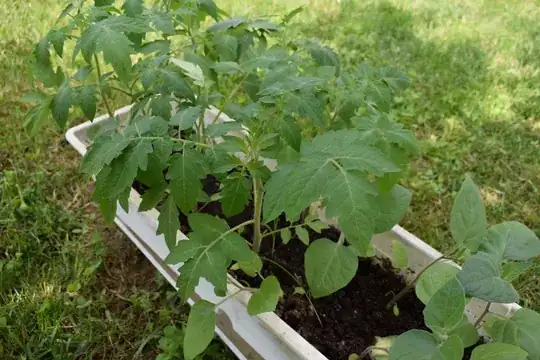Nope. I'm not aware of an external resource that will accurately tell you what variety a tomato is just by its leaves. I don't think anyone is. However, I can tell you this about tomato leaves. There are a number of types:
- Regular leaf (they may or may not be wispy)
- Potato leaf (there might be some wispy ones of these, but I haven't seen any; potato leaf is recessive to regular leaf)
- Rugose (these are usually on dwarf plants)
- Pom pom style (the only variety I know with this is called Stick; so, if you see these leaves, odds are it's Stick—but new varieties could potentially come to express this leaf type, too, and there may be ones that exist now that I don't know about)
I know at least regular leaf and potato leaf tomatoes can be variegated, too. I believe that trait is passed via mtDNA—so the mother plant should always pass the trait on (but if it pollinated others, it shouldn't make them variegated). I've only heard of one or two variegated tomato breeds (the one I recall is named Variegated), but I had a fluke Pruden's Purple tomato with a variegated branch in 2015 (the seeds didn't produce variegated tomato plants, though).
There is a lot of variety of appearances within some of the leaf types.
I've found that the smell of tomato leaves seems to be a lot more unique than their appearances. However, it's still an unreliable measure, much as the taste of the fruit is.
The truth is, unless you do genetic tests or something, you really can't tell what breed a tomato is (no matter whether you see the leaves, the fruits, the growth habit, or anything else about it) without keeping a record of it. You can make really great guesses, but there's always the chance you're wrong. I think that's one of the reasons that dog breeds require papers as proof that they're pure (you can't tell what they are just by the way they look and act). We don't require papers for tomatoes, but you still need to keep a record of it if you want to be sure what it is (and make sure you know it isn't a hybrid from cross-pollination, too).
Knowing that there are probably over 20,000 kinds of tomatoes, and counting, might help you realize why identifying them isn't an exact science. Most tomatoes have a lot in common with many other tomatoes. For instance, I can't even tell you how many beefsteak-shaped, red, regular leaf, indeterminate, large-fruited, mild-tasting, mid-season tomatoes there are. There are loads of them.
